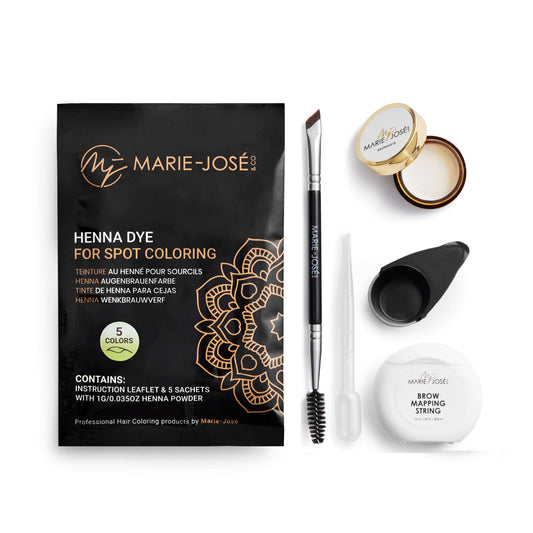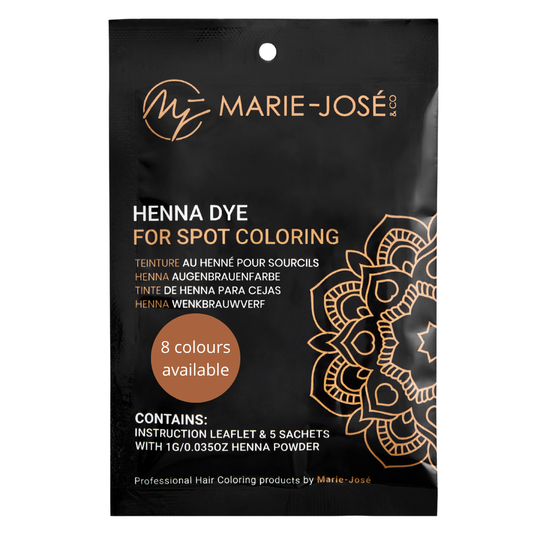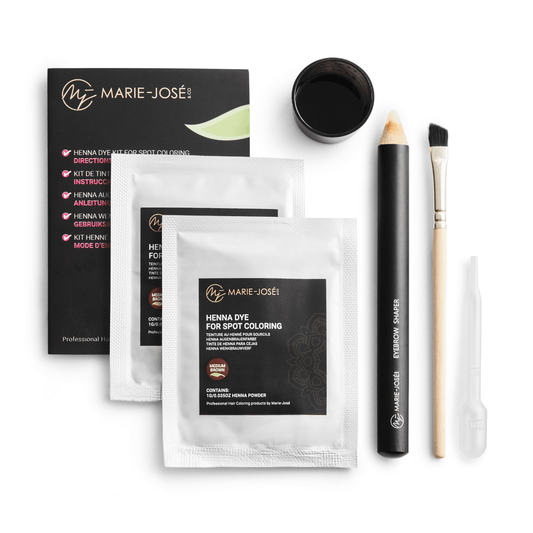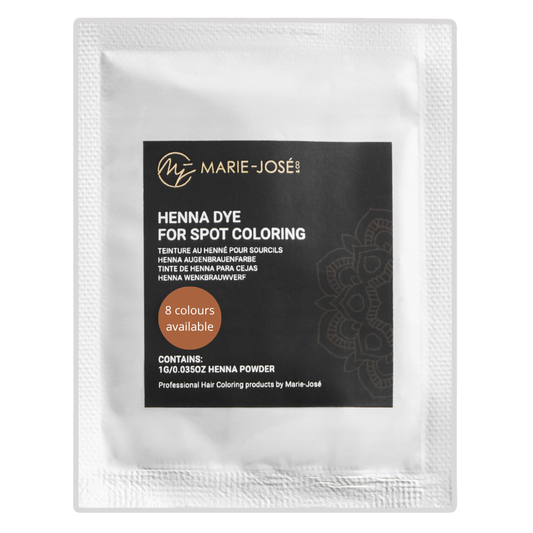
Traditional, Henna or Hybrid Brow Tint? Discover the Differences
Share
At Marie-José Brows, we know that perfect brows are the secret to a fresh, polished look. More and more beauty professionals work with brow tints — but which type suits your client best? Will you choose traditional tint, henna, or our latest innovation: hybrid brow tint?
Below we outline the benefits and key differences for you at a glance.
Traditional Brow Tint
The classic brow tint — known from brands like RefectoCil and Combinal — that primarily colors the hairs evenly.
Advantages
- Quick treatment — ready in just a few minutes.
- Delivers a soft, natural look.
- Easy to use and widely known.
- Suitable for almost every skin type.
Disadvantages
- Hardly stains the skin — less effective for thin brows or sparse areas.
- Fades relatively quickly (about 3–4 weeks).
- Shade mixing is possible, but less refined than with henna.
Best for: clients who want a subtle, natural look or as an add-on to other treatments.
Marie-José Henna Brow Tint
Our popular Henna Brows are a staple in many salons. Henna tints both brow hairs and the skin for crisp, defined brows.
Advantages
- Makeup-like finish without pencil or powder.
- Visible on the skin for up to 7 days and on the hairs for up to 6 weeks.
- Perfect for filling sparse areas.
- Lots of freedom in shade mixing and dosing → fully bespoke.
- Powder format gives precise control over intensity.
Disadvantages
- Longer service time (30–45 minutes).
- Not compatible with brow lamination.
- Powder can disperse; prepare your workspace properly.
Best for: clients who want maximum definition and statement brows.
New: Marie-José Hybrid Brow Tint
Our latest innovation combines the benefits of traditional and henna brow tints.
Advantages
- Long-lasting: up to 6 weeks on the hairs and 7 days on the skin.
- Suitable for both natural and bold brow looks.
- Faster and easier to apply than henna.
- Intense hair tint with a clear yet soft skin stain.
- Fully compatible with brow lamination.
- Application method many beauty professionals already know.
Disadvantages
- Slightly more expensive than traditional tint.
- Requires some experience to fine-tune intensity.
- Fewer options for custom shade blending than henna (more standardized tones).
Best for: clients who want bold, expressive brows and full compatibility with brow lamination.
Comparison Table: Traditional vs. Henna vs. Hybrid
| Feature | Traditional | Henna | Hybrid |
|---|---|---|---|
| Longevity on hairs | 3–4 weeks | up to 6 weeks | up to 6 weeks |
| Longevity on skin | minimal | up to 7 days | up to 7 days |
| Finish | Soft & natural | Crisp & makeup-like | Natural or bold |
| Treatment time | 5–10 min | 30–45 min | 15–20 min |
| Shade mixing | Limited | Highly versatile | Limited |
| Brow lamination | Compatible | Not compatible | Compatible |
| Best for | Clients seeking a soft, subtle look | Clients wanting crisp, defined brows | Salons prioritizing speed & flexibility |
Which brow tint will you choose?
- Traditional → soft, natural brows with a short service time.
- Henna → crisp, defined brows with customizable shades.
- Hybrid → long-lasting, versatile, fast, and compatible with brow lamination.
With both our Henna Brow Tint and brand-new Hybrid Brow Tint, Marie-José Cosmetics gives professionals the right solution for every client.




